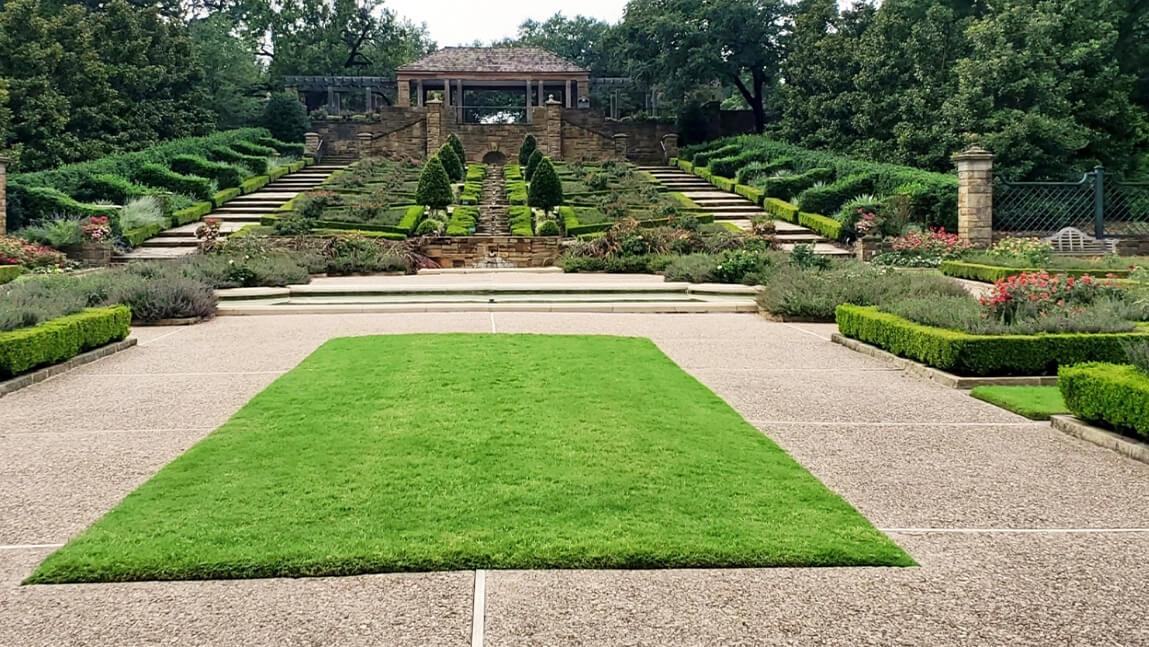By Andrea Knepper
Extension Master Gardener Intern
University of Vermont
The weather in Texas in July and August is hot. Sweltering. On my recent trip to Fort Worth, Texas, the shady and beautifully maintained Fort Worth Botanic Garden was a welcome sightseeing stop.
The Fort Worth Botanic Garden was founded in 1934 and is the oldest major botanic garden in the state of Texas. The garden now covers 120 acres, has 14 specialty gardens and a tropical conservatory. It is a neighbor of the Botanical Research Institute of Texas.
With a strong emphasis on nature discovery and education, the site has a garden or exhibit for every age to enjoy. Visitors can learn techniques to use in their home gardens. Children can interact with an exhibit of animals who call Texas home, and everyone can witness the native habitat of northern Texas and enjoy sculptural art throughout the gardens.
These are my top five must-see gardens at the Fort Worth Botanic Garden.
Adelaide Polk Fuller Garden: The first garden after passing through the visitor center courtyard features covered walkways, stone hardscaping, gazebos and flowing water. Plantings vary in color and texture according to the seasons. This time of year, several species of hibiscus, yellow trumpet vine (Campsis radicans) and Chinese snowball viburnum (Viburnum macrocephalum) are in bloom. A new art installment by Dallas artist Jen Rose provides environmentally friendly watering stations for pollinators.
Rose Garden: The Rose Garden has been a headliner for the Fort Worth Botanic Gardens since its completion in 1933. The Shelter House allows for a stunning view of the gardens and reflection pool. Antique, tea, miniature, floribunda or climbing roses are tended in tidy beds and interplanted with native species, such as Texas lantana (Lantana urticoides) and Rio Grande globe gomphrena (Gomphrena haageana). Educational signage explains how to care for roses.
Victor and Cleyone Tinsley Rock Springs Garden: Along with the Rose Garden, the Rock Springs Garden was part of the original purchase of the botanic gardens. This area is being restored to native North Texas habitat. Walking along the pathways circling the natural springs, visitors will see brilliant red Turk's cap (Malvaviscus drummondii), more Texas lantana, snake herb (Dyschoriste linearis) and rock rose (Pavonia lasiopetala).
Backyard Vegetable Garden and Compost Outpost: This demonstration garden is maintained by the Tarrant County Master Gardeners. It is frequently visited by school-age children, family groups and residents interested in learning more about vegetable gardening and composting. I especially enjoyed seeing what jicama and peanut plants look like and found inspiration in the vegetable soup and garden salsa themed beds.
Japanese Garden: Perhaps the most popular attraction, the Japanese Garden was completed in the traditional style and features cherry trees, magnolia, bamboo and meticulously pruned Japanese maple (Acer palmatum). The pagoda, tea house and Shinto shrine are stunning in their simplicity. Visitors enjoy watching and feeding over 1,200 koi. Seasonal festivals showcasing springtime cherry blossoms and fall colors are particularly popular.
Even if you are not visiting North Texas anytime soon, you can still enjoy the Fort Worth Botanic Gardens through their website at https://brit.org. Tour the gardens virtually through the "Explore the Campus" tab.
Check out the "Education" tab to participate in a wide range of learning opportunities, many offered virtually. Or view current exhibits and photos on their Facebook page @FortWorthBotanicGarden.
Andrea Knepper is a UVM Extension Master Gardener Intern from Bolton.
